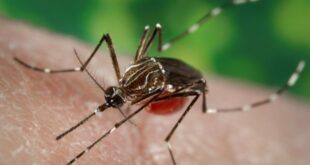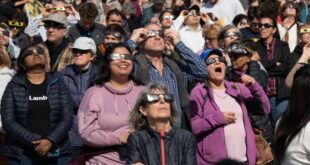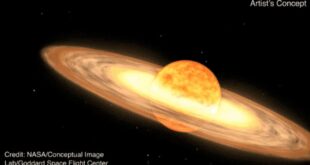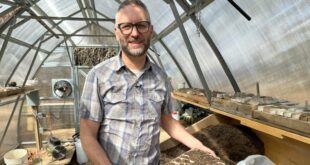New book details all the ways the biological activities of animals make and remake our world.

From the tiniest insects to the largest whales, biologist Joe Roman says animals play an important role on our planet through the sheer act of eating, pooping, and even dying.
Whether it’s in downtown metropolises or remote volcanic islands, Roman says animals act as conveyor belts, moving nutrients across long distances. And through that movement, they sustain life as we know it.
In a new book, he details all the ways that the biological activities of animals make and remake our world, and how the restoration of wildlife populations can help fix our current climate crisis.
Roman spoke with Quirks & Quarks host Bob McDonald about his new book Eat, Poop, Die: how animals make our world. Here is part of their conversation.
In your book, you say that if forests are the lungs of the planet, then animals are its circulatory system. What do you mean by that?
I think most of us are familiar with what trees and plants do, right? They absorb carbon dioxide and emit oxygen. But the one thing about trees and plants is they tend to stay in one place.
Animals, on the other hand, can walk, swim, and fly vast distances, sometimes thousands of kilometres. And when they do, they eat in certain places, and they poop in others, and they can even die in others.
Think of something like a seabird: [it] eats in the ocean, comes to an island or a beach in order to breed, and poops, right? One pasty poop at a time, they’re releasing nutrients from the ocean onto land. And every animal does something like this.
Now you also say in your book that this is an overlooked process. Why do you think that is?
I think one of the reasons for that bias is we live in a world that’s really bereft of wild animals. I was shocked to find when I was working on the book that right now 96 per cent of the biomass of all mammals on the planet is either humans or domestic animals like cows and sheep. Only four per cent of all mammals on the planet are wild.
So it kind of makes sense that we don’t think they’re that important because we’ve taken them out of the systems, not only where we live but also out of the oceans.
Do you think part of the issue of dealing with this nutrient conveyor belt, as you call it, is because we don’t really like talking about poop?
Yeah, there’s probably some of that too. Unless of course you have a five-year-old. But you’re right, we haven’t really thought about the role of feces in lots of ecosystems. Because very few of us have probably ever seen a whale poop. I have, and it’s beautiful.
What’s our understanding of how whales contribute to this so-called conveyor belt?
There’s two ways that whales can influence ocean ecosystems. One is what we call a whale pump and that’s by diving, feeding and taking the nutrients from deeply beneath the ocean surface, coming to the surface and releasing these fecal plumes.
But what whales do also, is most whales migrate thousands of kilometres every year. They feed off the coast of, say, Alaska or off the coast of Nova Scotia, and then they breed in places like the Caribbean or Hawaii. What the whales are doing is feeding in high nutrient areas, migrating down to these tropical islands and releasing all these nutrients.
When a whale dies, that carcass is enormous. Hundreds of species can either feed on that, whether it’s sharks or crabs. But also there are some, like worms, that don’t have mouths or guts or anuses that just live on the bones of whales. So not only is it this movement of nutrients, but it’s also dead whales form these unique habitats throughout the world.

You have a wonderful chapter in the book where you talk about your adventure to the island of Surtsey off [the coast of] Iceland, which is a brand new island. [You talk about] the volcano that emerged out of the depths, and how life began there in this sterile land, starting with seabirds. Tell me about that.
So it erupted in 1963. Initially some biologists and volcanologists landed on the island, but it was still too active for people to stay. So they would come on and then they would rush off.
There’s very little life. A few seeds were landing there, but only the maritime seeds that brought their own nutrients could survive on the coastline. But then everything started to change about five years after the eruption with the arrival of Herring gulls, black-backed gulls, fulmars, and other bird species.
They of course got their food in the ocean, but they nested on land. When they got to the land, they would spread their feces at about three ounces per day, each bird. And if you look up Surtsey now you can see a bright green meadow on the middle of black lava, and that’s where the breeding birds were found.
How did life get established from seabird feces up to a meadow?
They land in this area and not only are they defecating, but they’re also releasing seeds. The estimate is about two thirds of all the plants on the island arrived on the feathers and wings and legs of seabirds.
So not only are they the transport, but they’re also the fertilizers. And this benefits the birds as well because now they have more places to nest, right? So you can see this ripple effect.

Do you think we can restore this conveyor belt and keep these nutrients flowing around the planet through the animals?
I’m sure we can do this because I’ve seen the changes. Two examples: Humpbacks off the coast of Australia are now back to the [population] numbers they probably were before people arrived. They were down to 600. They’re up at about 25,000.
And similarly for for sea lions. Elephant seals in the North Pacific were once down to 25 individuals. They’re now well over 100,000. So we can do it animal by animal, but it really takes an ecosystem.
ABOUT THE AUTHOR

Producer
Amanda Buckiewicz is an award-winning science journalist with CBC Radio’s legendary science show, Quirks & Quarks. Her work can be found on Discovery Channel, BBC Earth, Smithsonian, and Amazon Prime.
*****
Credit belongs to : www.cbc.ca
 Atin Ito First Filipino Community Newspaper in Ontario
Atin Ito First Filipino Community Newspaper in Ontario






